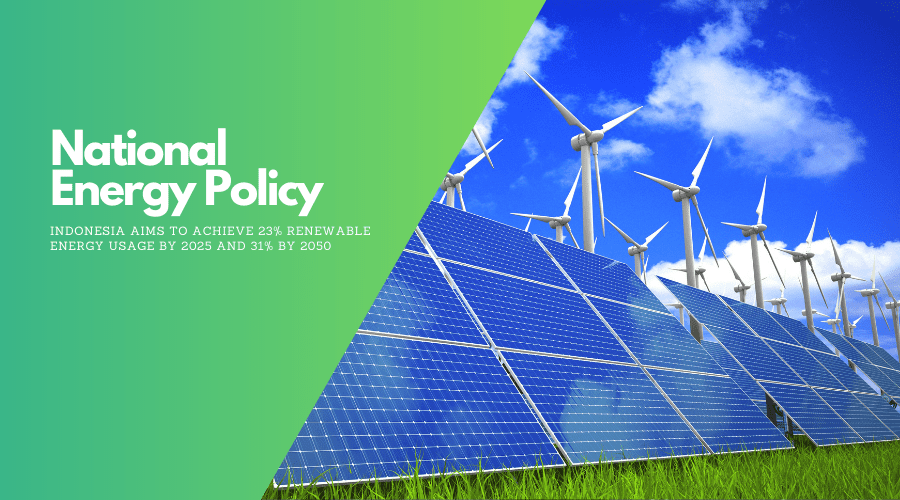As one of the largest and most populous countries in Southeast Asia, Indonesia holds immense potential for growth and development. As our planet faces the challenges of climate change, countries around the globe are turning towards sustainable alternatives to meet their energy needs. And when it comes to embracing renewable technologies, Indonesia stands at the forefront with its booming green energy industry.
We will look into the current market size of Indonesia’s green energy sector and explore why investing in this rapidly growing industry is a smart move.
The current market size of Indonesia’s Green Energy industry
In a recent Bloomberg article, Dalma Capital Advised $420m deal in Indonesia. Mishal Kanoo, a member of the Board of Directors of Dalma Capital, in a comment stated that;
“Dalma Capital is proud to have advised GMR Group on its divestment in PT GEMS, thereby supporting the Group’s initiatives towards a more sustainable future in the area of green energy,” reinforcing their continued strategy of focusing on the core infrastructure business.
Indonesia’s green energy industry is experiencing a remarkable surge in recent years. With its abundant natural resources, including solar power, geothermal energy, and hydroelectricity potential, the country has become a hotbed for renewable energy investments. As of now, the market size of Indonesia’s green energy sector stands at an impressive figure.
One of the main contributors to this growth is solar power. The tropical climate of Indonesia provides ample sunlight throughout the year, making it ideal for harnessing solar energy. Companies are investing heavily in large-scale solar projects across the archipelago to tap into this immense potential.
Geothermal energy also plays a significant role in Indonesia’s green energy landscape. Sitting on the Pacific Ring of Fire gives the country access to vast geothermal reserves that can be utilized for electricity generation. The government has been actively encouraging foreign investment in geothermal projects to further develop this clean source of power.
In addition to solar and geothermal sources, hydroelectricity has long been harnessed as a reliable renewable resource in Indonesia. With countless rivers and waterfalls dotting its terrain, hydroelectric power plants provide sustainable electricity while minimizing greenhouse gas emissions.
Investing in Indonesia’s green energy industry comes with its own set of pros and cons. On one hand, there is tremendous growth potential due to increasing demand for clean and sustainable solutions worldwide. This opens up opportunities for local businesses and international investors alike.
However, challenges such as regulatory uncertainties and infrastructure limitations may pose obstacles along the way. It is important for investors to carefully navigate these hurdles by conducting thorough research and partnering with experienced local players who understand both business dynamics and government policies within the sector.
Despite these challenges, projections indicate a promising future for Indonesia’s green energy industry. The government has set ambitious targets aiming towards achieving 23% renewable share in total national primary consumption by 2025 – paving the way for further expansion in renewables like wind power and biomass utilization.
As we move forward, it is clear that Indonesia’s green energy industry has immense
The different types of green energy in Indonesia
One of the primary sources of green energy in Indonesia is hydroelectric power. With numerous rivers flowing across the country, hydropower plants have been established to generate clean electricity. These plants not only provide a sustainable source of energy but also contribute to flood control and irrigation systems.
Another important type of green energy in Indonesia is geothermal power. The country sits on the Pacific Ring of Fire, making it rich in geothermal resources. Geothermal power plants tap into this heat from beneath the Earth’s surface to produce electricity without emitting greenhouse gases or other harmful pollutants.
Solar power is also gaining momentum in Indonesia as an alternative source of renewable energy. With its tropical climate and ample sunshine throughout the year, solar panels are being installed on rooftops and open spaces to capture sunlight and convert it into usable electricity.
Furthermore, wind power is emerging as a viable option for clean energy generation in certain regions with favourable wind conditions. Wind turbines are being set up along coastal areas and windy highlands to harness this abundant resource and transform it into electrical power.
In addition to these main types of green energy, biomass and biofuels are also notable contributors towards sustainability efforts in Indonesia. Biomass refers to organic materials such as agricultural waste or wood chips that can be converted into biogas or used directly as fuel for heating or cooking purposes.
As we can see, Indonesia has a wealth of options when it comes to green energy sources. By diversifying its renewable portfolio, the country can achieve both environmental benefits by reducing carbon emissions and economic growth through investments in clean technologies. As technology advances further and more investment pours into this sector, we can expect even greater innovations within Indonesia’s green energy industry.
The pros and cons of investing in Indonesia’s green energy industry
One of the major benefits of investing in Indonesia’s green energy industry is the vast potential for growth. With a population exceeding 270 million people, there is a high demand for clean and sustainable energy solutions. The government has also been actively supporting renewable energy initiatives, creating favourable policies and incentives for investors.
Another advantage is the abundance of natural resources that can be harnessed for green energy production. Indonesia boasts significant geothermal reserves, making it one of the world’s largest producers of geothermal power. Additionally, solar power holds great potential due to the country’s tropical climate with ample sunlight throughout the year.
However, there are some challenges that need to be taken into account when considering investment in this sector. One issue is regulatory uncertainty and bureaucratic processes that can slow down project implementation. Navigating through permits and licenses may require patience and expertise.
Infrastructure development presents another challenge as many remote areas lack proper transmission lines or grid connectivity, hindering efficient distribution of renewable energy sources like wind or solar power.
Moreover, while government support exists on paper, actual implementation might fall short due to budget constraints or other factors beyond control.
The future of Indonesia’s green energy industry
The future of Indonesia’s green energy industry holds immense potential and promises exciting developments in the coming years. With the increasing global awareness about climate change and the need for sustainable solutions, there is a growing demand for renewable sources of energy.
One key factor driving the growth of Indonesia’s green energy industry is its vast natural resources. The country is rich in solar, wind, geothermal, and hydroelectric potential. As technology continues to advance, harnessing these resources becomes more efficient and cost-effective.
Government initiatives also play a crucial role in shaping the future of this industry. In recent years, Indonesia has implemented policies to encourage investment in renewable energy projects such as feed-in tariffs and tax incentives. These measures provide incentives for businesses to shift towards clean energy solutions.
Moreover, international collaborations and partnerships are further propelling the growth of Indonesia’s green energy sector. Foreign companies are investing in joint ventures with local players to tap into this lucrative market while contributing their expertise and technologies.
In addition to environmental benefits, investing in green energy can offer economic advantages as well. The industry has the potential to create numerous job opportunities across various sectors including manufacturing, construction, operations, maintenance, research & development.
However, it’s essential to acknowledge that challenges exist on this path towards a greener future. Infrastructure limitations like grid connectivity may pose obstacles for successful implementation of renewable projects across remote areas or islands within Indonesia.
Nonetheless, persistent efforts by both government bodies and private enterprises will likely pave the way for overcoming these barriers. The continuous improvement of storage technologies will also help address intermittency issues associated with certain forms of renewable power generation. The advancement in battery storage systems will enable better integration into existing grids enabling optimal utilization. Overall, the future looks bright for Indonesia’s green energy sector. With ongoing technological advancements, a favourable regulatory environment, and increasing awareness among consumers, the stage is set for rapid growth. It is an exciting time not only from an environmental perspective but also from an economic standpoint. There is no doubt that the green energy industry in Indonesia will continue to thrive and contribute

Conclusion
As we have explored the current market size of Indonesia’s green energy industry and its potential for growth, it is clear that this sector holds immense opportunities for investors. The government’s commitment to clean and sustainable energy sources, coupled with the country’s abundant natural resources, makes Indonesia an attractive investment destination.
With various types of green energy being harnessed in the country – including solar power, wind power, geothermal energy, hydroelectricity, and bioenergy – there is a diverse range of options available for investors to explore. Each type has its own unique advantages and challenges, but collectively they contribute towards reducing greenhouse gas emissions and creating a more environmentally friendly future.
Investing in Indonesia’s green energy industry comes with numerous benefits. Not only does it align with global efforts to combat climate change, but it also provides an opportunity to tap into a rapidly growing market. The Indonesian government offers incentives such as tax breaks and favourable regulations to attract investments in renewable energy projects. Additionally, partnerships with local companies can provide access to valuable expertise and networks within the industry.
Looking ahead into the future of Indonesia’s green energy industry, all signs point towards continued growth and expansion. With ambitious targets set by the government under its National Energy Policy (KEN), which aims to achieve 23% renewable energy usage by 2025 and 31% by 2050; there will be increased demand for clean sources of power generation.
Furthermore, as technology advancements continue at a rapid pace globally – particularly in areas such as battery storage systems and smart grid solutions – these innovations will further enhance the efficiency and reliability of renewable energy sources in Indonesia.



































